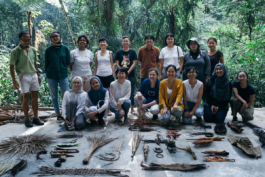


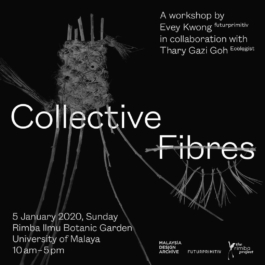
‘Collective Fibres’ is a weaving workshop exploring possibilities of the local and overlooked resources found in and around the Botanical Garden of University Malaya. Different material senses will be invoked by a series of sensual and practical experiments that might include include twining, braiding, coiling, plaiting and sewing foraged materials. Possibilities of what woven materials could do – or be — will be stretched to their maximum as participants forage for leaves, twigs, barks, roots or stones.
In this one day, the do-it-together hands-on workshop will allow participants to create woven (non)-objects through the finding of resources, the making through trial and error, all while developing new neural connections and gaining unique knowledge of the world through their senses. The workshop will result in a short presentation.
Workshop concept & teaching: Evey Kwong
Collaboration: Thary Gazi Goh
Coordination: Malaysia Design Archive
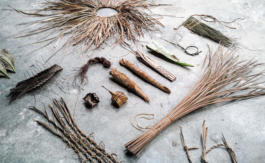
Site-specific (non)-objects by Evey Kwong. Raw materials from Rimba Ilmu Botanic Garden University of Malaya.
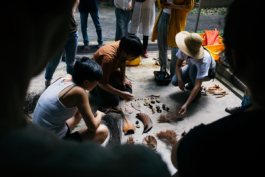
The typical understanding of weaving occupation is to produce an object in form of a utilitarian object. The goal of the workshop is not to produce the above nor to master weaving techniques, but to allow opportunities for individuals to connect with nature in a unique, creative, yet community-oriented way while improvise their knots, twine and plaits.
While looking for materials in the woods, we learn how to not be restricted with the materials we already know — all through intuitive working process with the guidance of the tutors. By twisting, bending and forming the raw materials, one decides what needs to be implemented during the process of creation. There are no rules. The participants’ imagination are at their expense.
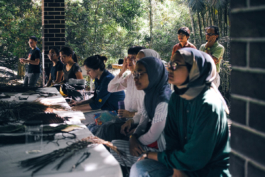
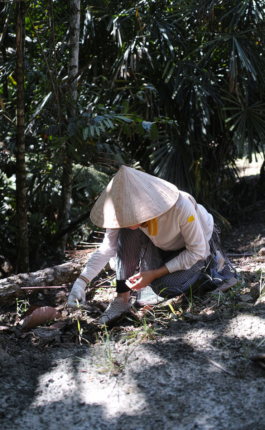
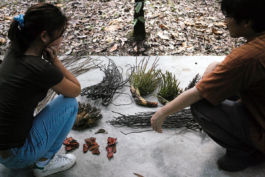
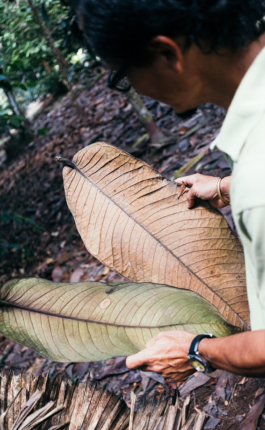

Foraging and tropical plants identification in the vicinity of the botanical garden. Variety of plants such as gelam tikus (syzgium gratum), seed pods, different species of giant leaf-plants, palm and vines.
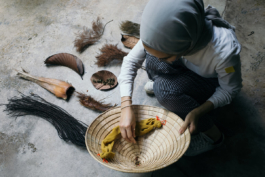
This principle is via “thinking by making” experiments. In these experiments, participants are to reimagine the materials into (non)-objects, and provoke dialogue about how and why the form is decided. Another of my techniques is to create instruments: tools and basic techniques with which people can collectively investigate and experiment.

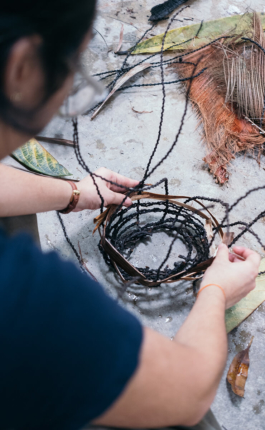
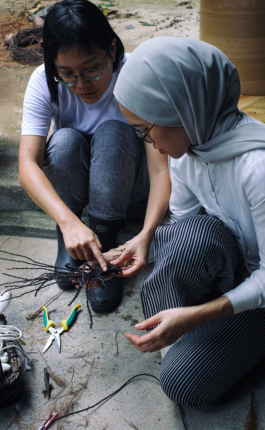
This workshop combines techniques from improvisation and many other disciplines. In order to map out possible futures for crafts making, while the capitalism’s increasingly atomised and deskilled production processes, the maker-explorer needs to be adaptable to materials found from their immediate environment. And most likely you won’t have all the skills and tools you need. I believe that anyone can become a maker-explorer. The practice benefits from more practitioners. No particular abilities are needed, except a capacity for collaboration and creation.
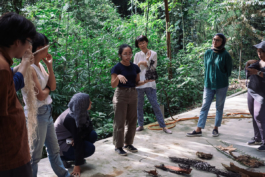
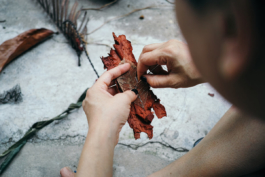


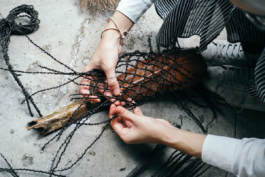
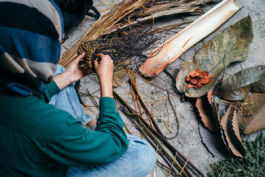
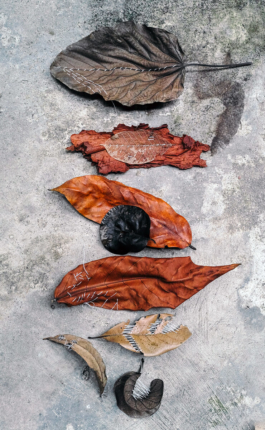

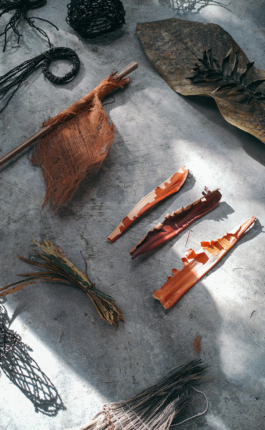
The results
